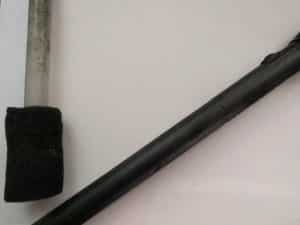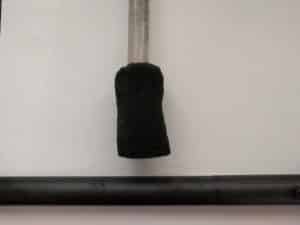If you are planning to have tropical fish in your tank, then it is very important that you keep your waters at the right temperature.
Below is Aquarium Blueprints’ guide that teach you what you need to know when it comes to heating your aquarium.
Quick Navigation:
- What determines the temperature in your fish tank?
- Do you need an aquarium heater?
- Should you have multiple heaters in your aquarium?
- Do you need a backup thermometer in your aquarium?
- Submersible Heaters
- In-line Heaters
What determines the temperature in your fish tank?
The temperature of your aquariums is based on a number of factors.
The most obvious factor is the temperature of your water source, whether you are using water from your tap or getting it from somewhere else. If you are planning to run a tropical fish tank, then most of the time the water you get from your source won’t be warm enough.
Of course, the temperature of where you are living matters a lot as well. With no temperature controlling mechanism inside it, the fish tank will eventually cool down or warm up to the room temperature. In other words, you may not even need a heater at all if your home is warm enough whether if it’s because of your weather, insulation and/or presence of a space heater.
You should also consider the lighting you are using for your aquarium. The fish tank lights will actually heat up your tank. Not to mention that if you expose your tank to direct sunlight, it will also raise the temperature of your water.
Furthermore, the draft in your room will alter the warmth in the tank. A cooler breeze, when compared to the water temperature, will make it colder.
Another factor is water movement. Aquariums with currents that move all around will be more consistent when it comes to temperature when compared to tanks that have dead spots or are completely stagnant.
Another element is whether or not you are using a top on your fish tank. Covering the topside will prevent heat from escaping, which will keep the water consistently warm when compared to using an open top.
Finally, how many gallons you have in your tank will also affect its temperature retention. The more body of water you have, the more effective your aquarium will be at retaining heat.
Do you need an aquarium heater?
So do you actually need an aquarium heater? That depends on the climate of where you are living, the insulation/heating systems you already have in place at your home as well as what aquatic species you like to keep.
If you have warm weather year round, then you may not need a heater in your fish tank. In general, locations closer to the equator have more constantly warmer temperatures when compared to other areas in the world. With that said, weather is unpredictable; so having a heater on hand is a good idea in case of emergencies like an unexpected cold spell.
How you keep your house warm will also determine the temperature of your fish tank. If you already have a built-in heater (or a space heater) to keep your home at a constant temperature at all times that also matches what you would like your water parameters to be, then you may not need a heater. Of course, having insulation will help also keep both your house and fish tank warm as well.
The only issue is that you may not want to run your space or built-in house heater when you are not at home; in this specific case, you may want to get an aquarium heater.
Last but not least, you should also take into account what type of fish you want to keep. Gold fish, white cloud minnows and certain Loaches prefer cooler water parameters for instance. So, you may opt not to use a heater if you are building a cold water tank.
Should you have multiple heaters in your aquarium?
A lot of fish keepers like to place multiple heaters in their tanks. One reason for doing this is for emergency purposes. If one of your heater is no longer functioning, then the other will pick up the slack immediately.
Furthermore, if you have a long tank that does not have a lot of flow running throughout the water column , then placing a second heater at the opposite end of the other one will also help keep your temperature constant over all areas of your aquarium.
Form our experience, heaters don’t usually last long. So, it may be a good idea to have some backup in case one dies.
Do you need a backup thermometer in your aquarium?
Even if you have a built-in thermometer with your heater, it is a good idea to have a separate, standalone thermometer in your aquarium. This is because the heater may not be correctly reading how warm or cold your tank is. So, if your heater is no longer functioning, or is malfunctioning enough to overheat your tank, you will easily know by checking out the standalone thermometer.
With a standalone aquarium thermometer, you can also measure the temperature at different areas of your tank. Doing so will give you an idea if one area is colder than the other, which will then lead into a decision as to whether or not you should increase the water current or get another heater in your tank.
The two most common heaters available for fish tanks are submersible heaters and in-line heaters.
Submersible Heaters
A submersible heater are required to be submerge into the tank water. This device uses a coiled element, which is usually placed inside a glass or plastic casing, to heat up your fish tank.
For maximum effectiveness, you should place a submersible heater as close to the intake of your filter as possible. Doing so will help spread out the heated water to the rest of your aquarium faster. If you have an elongated heater, you should also place it horizontally, or tilt it close to as close to a 45 degree angle as possible, so that it will be able to heat up more water. This is because heat rises in water; as a result, placing a long heater in a vertical position is not the most efficient position if you want to heat up and maintain the warm temperatures in your tank waters.


If you are looking for a submersible heater, we recommend picking one up that uses plastic casing or shatter-proof case as these types are less prone to cracking or breaking when compared to heaters that use regular glass.
In-line Heaters
An in-line heater is designed to heat water while it is passing through tubing. It is most commonly placed between the output tubing of a filter and the outtake where the water from the filter is returned to the tank.
When using in-inline heaters, you may potentially run into water leakage if your tubing is not tight enough. Not to mention that this type is also a bit more expensive when compared to submersible heaters. For these reasons, we believe that the submersible heater is the better of the two readily available options.
Recap
Depending of a few specific circumstances, you may not need an aquarium heater.
If you are planning to keep tropical fish, however, you will most likely need at least one.
If you do decide to purchase a heater, we recommend getting a submersible type rather than an in-line type.
